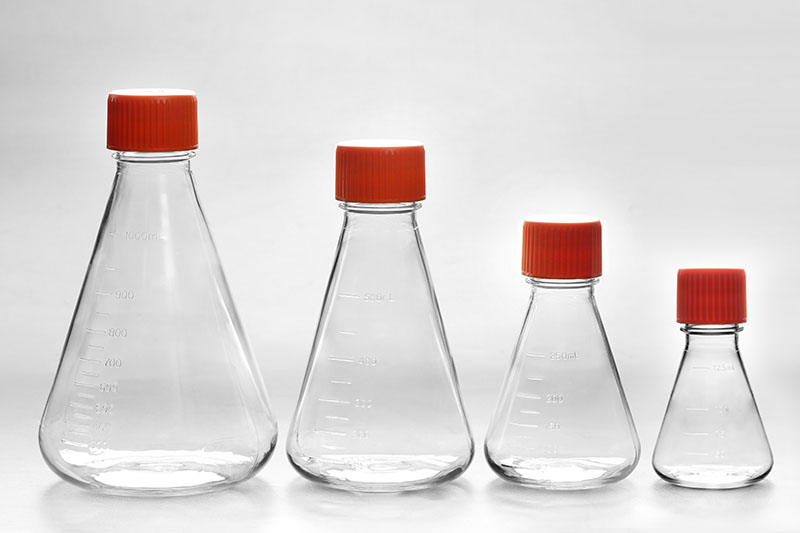Suspension cell culture erlenmeyer shake flasks are a type of consumables commonly used in cell culture. They are divided into two types: triangular shake flasks and large-capacity shake flasks according to the size and shape of the cell. The shape of the bottle is relatively special, therefore, the one-step injection stretch-blowing process is selected in the processing technology.
Suspension cell culture erlenmeyer shake flasks are mainly used for the cultivation of lymphocytes, insect cells and other suspension cells. The growth of such cells does not depend on the surface of the support, and grows in a suspended state in the culture medium. Since the growth of cells requires specific conditions such as environment, temperature, osmotic pressure, PH value, etc., the quality requirements for consumables are also higher.
The one-step injection stretch-blow production process is a more advanced process, which requires lower use of the production site area, more complex moldable structures, thicker or thinner products, and higher requirements for mold accuracy and process conditions. This process starts from the injection of the embryo tube of the product, to the stretch blow molding, and finally the demolding is completed in one step, saving a lot of labor, energy consumption and floor space, and the product quality and stability are higher. The suspension cell shake flask produced by this process has no flash, no spout, few defects, and also has a perfect mouth, bottom, seam line, more transparency and higher rigidity.
The one-step injection stretch-blow production process is not only applied to suspension cell culture erlenmeyer shake flasks, but also widely used in pharmaceutical packaging bottles, food packaging bottles, cosmetic packaging bottles and some high-end daily necessities packaging bottles.
The FAI climbed 5.9 percent year-on-year in the first 11 months of 2018, quickening from the 5.7-percent growth in Jan-Oct, the National Bureau of Statistics (NBS) said Friday in an online statement.
The key indicator of investment, dubbed a major growth driver, hit the bottom in August and has since started to rebound steadily.
In the face of emerging economic challenges home and abroad, China has stepped up efforts to stabilize investment, in particular rolling out measures to motivate private investors and channel funds into infrastructure.
Friday's data showed private investment, accounting for more than 60 percent of the total FAI, expanded by a brisk 8.7 percent.
NBS spokesperson Mao Shengyong said funds into weak economic links registered rapid increases as investment in environmental protection and agriculture jumped 42 percent and 12.5 percent respectively, much faster than the average.
In breakdown, investment in high-tech and equipment manufacturing remained vigorous with 16.1-percent and 11.6-percent increases respectively in the first 11 months. Infrastructure investment gained 3.7 percent, staying flat. Investment in property development rose 9.7 percent, also unchanged.
 English
English



















































